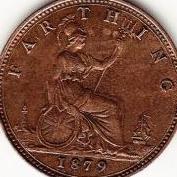coppied and pasted from the national trust
At first glance the stunning views on the Yorkshire Coast seem like a rugged natural landscape created by time and tide. In fact, human history is as significant as natural history in the shaping of this beautiful coastline.
In the 16th-century alum was essential in the textile industry as a fixative for dyes. Initially imported from Italy where there was a Papal monopoly on the industry, the supply to Great Britain was cut off during the Reformation. In response to this need Thomas Challoner set up Britains first Alum works in Guisborough. He recognised that the fossils found around the Yorkshire coast were similar to those found in the Alum quarries in Europe. As the industry grew, sites along the coast were favoured as access to the shales and subsequent transportation was much easier.
Alum was extracted from quarried shales through a large scale and complicated process which took months to complete. The process involved extracting then burning huge piles of shale for 9 months, before transferring it to leaching pits to extract an aluminium sulphate liquor. This was sent along channels to the alum works where human urine was added.
At the peak of alum production the industry required 200 tonnes of urine every year, equivalent to the produce of 1,000 people. The demand was such that it was imported from London and Newcastle, buckets were left on street corners for collection and reportedly public toilets were built in Hull in order to supply the alum works. This unsavoury liquor was left until the alum crystals settled out, ready to be removed. An intriguing method was employed to judge when the optimum amount of alum had been extracted from the liquor when it was ready an egg could be floated in the solution.
The last Alum works on the Yorkshire Coast closed in 1871. This was due to the invention of manufacturing synthetic alum in 1855, then subsequently the creation of aniline dyes which contained their own fixative.
There are many sites along the Yorkshire Coast which bear evidence of the alum industry. These include Loftus Alum Quarries where the cliff profile is drastically changed by extraction and huge shale tips remain. Further South are the Ravenscar Alum Works, which are well preserved and enable visitors to visualise the processes which took place.
 Coinpublications.com
Coinpublications.com


